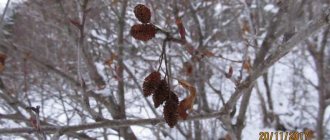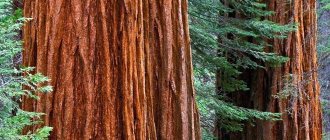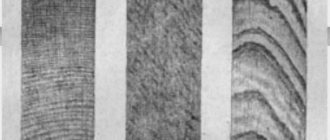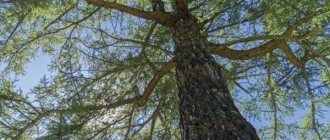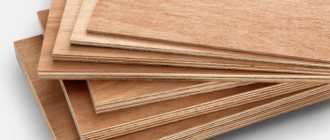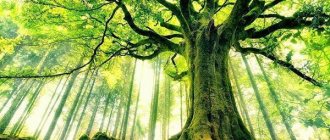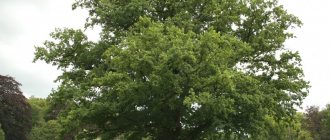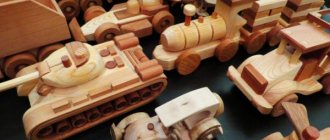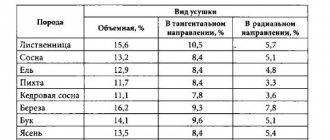Various legends are known about many green spaces, and the elm tree is no exception. In terms of power and grandeur, it can be compared to oak, and it is also long-lived. This plant is widespread in Russia, North America and Europe.
Elm - what kind of tree is this?
The name comes from the word "elm". The elm tree belongs to the deciduous genus and is a close relative of the elm. There are many legends about this plant. One of them says that evil spirits seek shelter in its branches and those who carry a piece of bark with them are protected. There are people who are sure that a piece of a branch will return lost strength, help them find the meaning of life and solve problems.
Many people are interested in where the elm tree grows. The greatest distribution is observed in Asia and the Southern Urals. In this area, trees create entire deciduous forests. The wood obtained from this species is a semi-precious species and is used to make various products, from spoons to a variety of furniture. The lifespan of a tree reaches 300 years.
What does an elm tree look like?
In order to understand what an elm tree looks like, you need to know its main characteristics:
- height about 30 m;
- crown diameter up to 1.3 m;
- large foliage with carved edges;
- color from light green to rich;
- flowers are small, greenish in color;
- bloom in April-May;
- the fruits resemble plates with seeds inside;
- the bark is rough with a rough surface;
- elm wood of a dark red or brown hue;
- The root system has both superficial and deep processes.
How does elm differ from elm? Lumber from elm, elm and elm wood
Karagach is the tree of sheikhs. Russian joiners and carpenters undeservedly neglect elm wood. In this article, we want to reveal to the reader the special qualities that elm lumber has.
15.12.15
Elm is a deciduous tree of the elm or elm family, growing in the Crimea, the Caucasus and Central Asia. Trees of this species are about 40 million years old. Tree wood has similar characteristics and is used in the same areas. Karagach is the Turkic name for small-leaved elm. The tree can reach 40 meters in height, and the girth of the trunk of such specimens can reach up to 2 meters. The average lifespan of trees is 80-120 years. In favorable conditions, there are also long-livers who live up to 400 years. In terms of its properties, elm wood is close to oak. It is strong, dense, has high viscosity, bends and resists well, and can be processed well. In terms of wear resistance, elm is not inferior to beech and ash. When drying in a chamber, there is little warping or cracking. The resistance of elms to rotting in water has long been known. Their wood was used for piles in the construction of bridges across rivers and for laying the lower rims of wells. In the Middle Ages, Europeans made water pipes from tree trunks with a hollowed out core. It is still used in mines and in the construction of hydraulic structures. Elm wood, a light yellow sapwood that turns into a dark brown core, has clearly visible growth rings and has a silky shine. The texture is visible in both longitudinal and transverse sections. These properties, as well as flexibility after steam treatment, are valued by furniture makers. In addition, elm has special properties. Even the final product made from this tree emits an aroma that acts on a person as an antidepressant. Burls often form on the tree trunk. Their wood is highly valued as a finishing material, as well as a material for making art products, as it has a very beautiful texture.
Elm tree - types
There are 10 different representatives of elm growing in our country. Almost all of them are long-lived, reaching an age of 250 years. The most common types of elm trees are:
- Ordinary
. Height up to 25 m, trunk diameter up to 1.5 m. The bark is dark brown and the leaves are dark green. The flowers are small brown-violet. Used for landscaping parks and local areas. - Squat
. Maximum growth is up to 15 m. They often form shrubby forms. The foliage is soft green and leathery. The inflorescences are small yellowish-brown in color. They do not like shaded areas, but at the same time they create dense shadow. - Lobed
. A Far Eastern species with large leaves of an original shape. The height of the trunks is 25 m, the crown is dense and cylindrical. Grows on mountain slopes. - Rough
. Found in deciduous forests of Europe. Height is about 35 m. The crown is smooth and dark brown. The leaves are large and light green. Life expectancy is about 400 years.
How does elm differ from maple? Description of the genus
Elm (from Latin ulmus laevis) is compared to oak in its majesty and power. This is a relict species, the lifespan of which trees goes back several centuries. The growing area of elm species is extensive; in Russia they are found in several subspecies; in addition, they can be seen in North America and Europe.
This genus of trees is found both as single representatives and in mixed plantings. They also feel quite good in poor soils, but mostly grow on fertile lands. This type of tree grows upward even when there is not enough sun. At the same time, the growth rate of elm is very high. The growth per year is about 50 cm in height, and in trunk girth up to 0.3 meters.
A mature elm can reach 40 meters, but there are also species that resemble shrubs. The surface of the bark of a young elm is without roughness, light brown in color, and over time it becomes covered with vertical grooves. The root system of the tree is powerful, the roots penetrate to a depth of 30 meters with a trunk with a girth of 1.5 meters. But some species have their roots spread out rather than deep, covering vast areas.
Elm leaves differ significantly from other species in their elongated oval shape and jagged edges. Leaf size is from 4 to 20 centimeters. They are located alternately on the branches and are attached to them with short cuttings. In autumn they change color from green to red-brown and the crown quickly thins out.
The tree blooms in the spring, before it becomes overgrown with leaves. The inflorescences are small, yellow in color. Elm seeds are small winged nuts. They ripen in the last days of May, and the wind scatters them throughout the surrounding area. If the conditions are right, they can germinate within a few days.
How to plant elm?
The procedure is no different from ornamental or fruit trees. The description of the elm tree includes the following manipulations during planting:
- dig a hole larger than the root system;
- apply fertilizer and transfer the seedling with the root ball;
- fill the remaining voids;
- compacted and watered.
At first, the seedling needs shelter from direct sunlight, while in the shade the plant will not fully develop. Before full rooting, it is important that the soil is constantly moist. An important point in planting is choosing the right place; an extensive root system can harm neighboring trees and other plantings.
How does elm differ from linden? Tree structure. From cells to roots
In many species of wood, there is a central dark-colored zone - the core and an outer light-colored zone - the sapwood. At an early age, all trees consist only of sapwood, but after some time (it is different for all species, and its width is also different) living elements begin to die off, blockage of water-conducting paths occurs and the deposition of extractive substances in the central part of the trunk - thus the core is formed in breeds called sound. These, for example, include: juniper, yew, pine, larch, cedar, oak, ash, elm, elm, walnut, willow, poplar.
In other breeds, the death of the central part is not accompanied by darkening. They have a uniform color of wood throughout the entire thickness of the trunk - such species are called coreless.
There is another type of species - mature wood, which have ripe wood in the central part of the trunk (drier than the rest). Their sapwood is the same color as mature wood. These include spruce, fir, beech, and aspen.
There are also rocks in which the central part does not differ from the peripheral part either in color or in properties - such rocks are called sapwood. These, for example, include: birch, linden, maple, hornbeam, etc.
In some deciduous trees, on a cross-section of the trunk, light shiny lines are clearly visible, diverging radially from the core - medullary rays. In radial directions they are visible in the form of narrow stripes, but are often invisible to the naked eye. They can be seen in oak, beech, maple and some other species.
Deciduous trees have water-conducting vessels that run along the axis of the trunk in the wood, and in the cross section only their sections of different shapes are visible. In some rocks they are large and clearly visible, forming rings. Such species are called ring-vascular - oak, ash, elm. Species with small, randomly located vessels are called scatter-vascular - birch, aspen, linden, maple, alder, beech.
Elm - care
When understanding what kind of elm tree is, you need to know that for full growth the plant needs the following attention:
- Proper watering
. During the growing season, the tree needs a lot of moisture. After pruning, moisture is reduced. - Fertilizer application
. Young trees are fed with organic matter 2 times a week. Compost fertilizers made from leaves are suitable. - Crown trimming
. This is done when the tree is at rest. The branches must be the same length. You can remove problem shoots at any time. Crown-forming pruning is carried out in the first 8 years of the tree’s life.
Elm tree - diseases
If weather conditions are incorrect or agricultural practices are not followed, the plant may be affected by the following diseases or insects:
- Dutch fungus
. As a result, the blood vessels in the branches or trunk become clogged, and the leaves dry out. There are no treatment methods. - Shield
. It attaches itself to branches and gradually sucks the juices out of them. Small pimples on the branches indicate their presence. To get rid of the elm tree, it is treated with special chemicals. You can use the following insecticides: “Iskra Zolotaya” or “Aktara”. - Bark beetles
. They penetrate under the bark and feed not only on the sap of the tree, but also destroy the integrity of the wood. The following preparations are used for treatment: “Confidor Extra” or “Clipper”.
Elm in landscape design
The beauty of the tree and its rapid growth make it possible to use it in improving green areas. Elm in the landscape can be found in this form:
- hedge formation;
- standard or bush options can be used in Japanese rock gardens;
- the elm tree can be salted on the lawn;
- standard plants become a “roof” for a shady composition.
Uses of elm
Wood has many advantages. It is used in:
- Medicine and traditional medicine.
- Furniture manufacturing.
- Construction Materials.
- Urban greenery and landscape architecture.
- Landscape design (hedges, sculptures, alleys, plant compositions).
- Joinery.
- Shipbuilding.
- Space heating (wood production).
Medicine
Elm leaves, bark and roots are used in traditional and folk medicine. Medicines have anti-inflammatory, antibacterial, healing effects, have a diuretic effect, normalize metabolism, the functions of the digestive and circulatory systems.
Before using the decoction and medicinal tincture, consult your doctor.
It is important to properly prepare the raw material in order to preserve its beneficial properties. Young bark is suitable and needs to be collected in the spring. Then dry in the open air. The leaves are collected in early summer and dried in the shade. Collected items are stored in paper or canvas bags in a dry, dark place for no more than two years.
landscaping
Elm is planted for landscaping parks, squares and avenues. Its lush crown traps dust and harmful substances and purifies the air. Wood is popular in landscape architecture for creating various compositions.
The crown tolerates pruning well. It can be given any shape. The crown is trimmed regularly from a young age.
Furniture manufacturing
The wood is dark brown in color with shine and a beautiful structure along and across. Annual rings are visible on the surface. It is hard, durable, elastic, ductile and heavy. It does not crack when dried and is very resistant to rotting. It is used for the manufacture of furniture, veneer, construction and finishing materials (parquet, parquet block, wall panels, cladding).
Joinery
In Russia, furniture and household items (dishes, cutlery, drawers) were made from wood. It was cut into thin strips, blown and knitted into various products (baskets, boxes, boxes). Sleds and other products were woven from young branches. From the hair part of the tree (bast) - ropes, mats and sponges.
Currently, wood is used to produce various sports equipment (bows, arrows, tennis rackets, baseball bats, barbells). Handles for tools (hammers, axes, knives and shovels) are made from it. The wood bends well. Suitable for creating complex shapes (panels, crafts, horse harnesses, carved elements, figurines for interior decoration).
Shipbuilding
Due to its resistance to rotting, elm can be used to decorate cabins and make parts of ship hulls. Used in the construction of dams, dikes, canals and mine sluices.
How to get rid of an elm tree?
With its beauty and benefits, sometimes situations arise when you need to get rid of a plant. An easy way is to cut or dig, but in some situations this is not possible. In this case, the elm elm is removed using a chemical method. To do this, you can use watering, spraying, grafting, introducing the drug into the soil, or applying it to the bark. Among the well-known ones are the following: “Sodium nitrate”, “Ammonia nitrate” or “Arsenal”. Alternative methods include:
- Use of salt. Watering is carried out with a concentrated salt solution. The larger the tree, the greater the quantity required.
- Root tiling. They are filled with concrete to the very foundation. This leads to a blockage of oxygen and moisture. On average, the roots die after a month.
- Shutting off the air supply with mulch. A layer of mulch 15 cm high is laid over the roots. The same is done with the trunk. This partially blocks the supply of nutrients, which leads to death.
Elm tree - properties
In addition to high-quality wood, elm has various positive qualities used in folk medicine.
- A decoction of the bark is used for diarrhea, it helps with gastritis and ulcers.
- An infusion of the leaves helps with colic.
- The gruel promotes wound healing.
- Compresses help with scabies and eczema.
- Preparations based on this tree restore the functioning of the heart muscle and normalize metabolic processes in the body.
- An infusion of the bark is effective for cystitis.
- The fruit-based drug is used to relieve inflammation and restore the epithelium.

